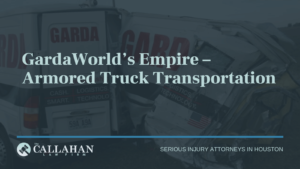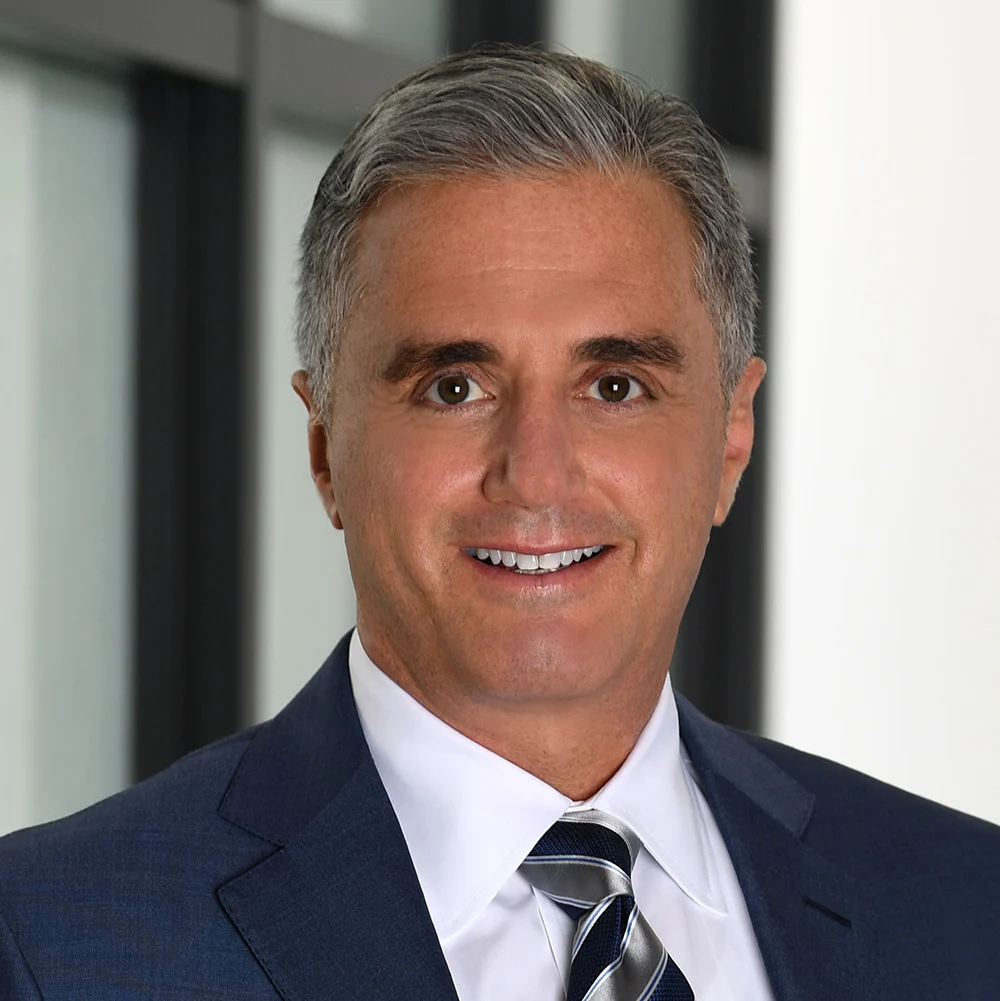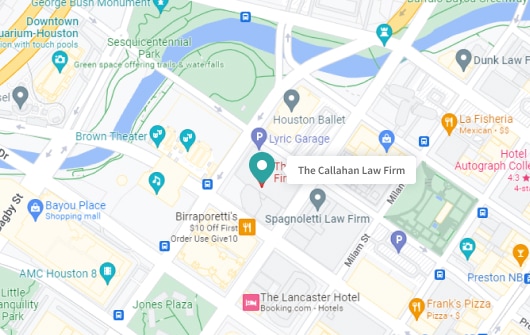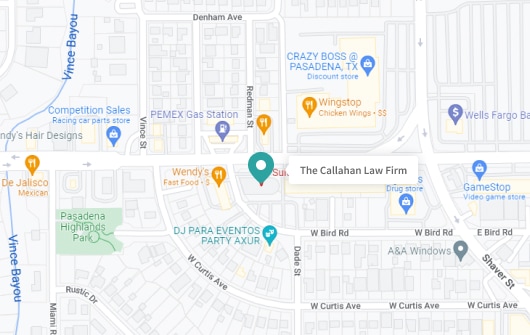GardaWorld’s Empire – Armored Truck Transportation

Since 2005, when it started buying into competitors, GardaWorld has been growing, quickly building a fleet of armored trucks. Garda has experienced explosive growth since then, with revenue skyrocketing from less than $200 million in 2006 to over $2 billion reported in 2019. As it grew, it obtained some smaller companies, giving itself an international name and reputation. But this growth has come with a price: the safety of Garda’s workers and innocent motorists.
At least 19 people have been fatally injured in Garda armored truck crashes since 2008. Twelve of those were due to either a mechanical failure or an error of the Garda driver. Furthermore, a GardaWorld database showed that from February 2014 to July 2016, the company averaged roughly 100 collisions per month, injuring over 320 people in the process.
Federal data backs this up; numbers show that Garda has significantly more crashes per mile driven than its competitors; despite driving fewer miles, the data shows that Garda trucks crashed 46% more often than Brink’s and 80% more than Loomis and Dunbar.
In 2011, GardaWorld announced that they were moving their main headquarters to Florida, incited by a million-dollar state tax break. Once the move was complete, managers were told to seek out ways to lower spending. Workers at companies bought out by the armored truck giant noticed that safety standards began to lower soon after they were bought out, and workers recruited from other companies noted the stark difference between the guidelines issued at their former company compared to Garda. One manager, recruited from Brink’s, stated that the company put off maintenance and repair bills and pressured branches to cut costs. In addition, training measures were cut in order to save money. The result? More people got hurt.
Unsafe Driving Conditions
The Tampa Bay Times ran an investigation on GardaWorld and after interviewing ninety current and former employees, reading through court reports, examining government inspections, and analyzing documents, photos, and videos taken by Garda workers, they found the company guilty of a decade’s worth of safety violations and overall dangerous behavior.
Photos gathered from Garda armored truck drivers show the dangerous conditions they had to work in. One driver’s photo showed they had a bungee cord instead of a seat-belt. Another picture showed no seat altogether; the driver instead had to sit on an overturned plastic bin with a cushion on top to drive.
In the interviews The Times conducted, many of the employees said that when they informed the company about safety concerns, they were generally disregarded. Of the 56 current or former drivers spoken to, 55 said they had worked in trucks with mechanical issues.
Former branch managers also said that their maintenance and repair requests went unheard. One former manager stated that he was told to send drivers out even if their trucks were in unsafe conditions. If he ordered trucks be taken off the road, higher ups would assign them to another manager to make workers take them out. Drivers who refused to get into an unsafe truck were sent home without pay, which caused them to get behind the wheel despite their best judgment.
Drivers would also be penalized for running their route too slowly, even if it was a longer route or a route laden with stops. Because of this, many drivers stated that they felt pressured to speed and run red lights so they wouldn’t be demoted or have their pay docked.
One driver cited a reprimand filed in court that stated Garda threatened to fire him for being slow on a day that his truck had broken down for several hours. In some instances, drivers have even been faulted by the company for accidents caused by Garda truck failures; they were charged because the ruling insisted that the driver was responsible for asking Garda to repair their trucks. At the very least, this raises serious concerns about Garda’s safety maintenance program for its trucks.
The Extent of the Problem
Drivers faced a plethora of issues ranging from brake problems, expired tags, broken speedometers, bald tires, dim headlights, and heavy smoke emissions. Despite touting their emphasis on safety and security, many of these money-transporting trucks also lacked locks. Some drivers had to DIY their locks with zip ties, rope, or wads of paper, and several of them reported the truck doors would swing open if they turned too quickly. Still other trucks were sent out despite shaking so violently the drivers couldn’t see through the rear-view mirror.
On top of these major safety issues, drivers weren’t issued any formal training; drivers stated that they were just given keys and sent on their way. Some drivers were given written tests on Department of Transportation rules before starting, but it was just a formality—the answer key was attached.
Some error-prone drivers were even allowed to continue driving despite having crashed multiple times. One driver was found to have crashed nine times and received 3 citations. Another crashed six times within a one-year span. Both continued to drive for the company.
Beyond the Drivers
Deaths and injuries caused by these accidents have quietly led to undisclosed settlements. The crashes have hardly attracted any public notice, nor have government regulators stepped in. In 2017, an investigation by the Department of Transportation was done at one of Garda’s smaller Ohio branches after receiving a few complaints about Garda refusing to repair trucks. They discovered that maintenance requests were being sent to an employee who no longer worked at the company.
Federal guidelines require trucking companies to keep track of their drivers’ schedules so that they can have at least 10 hours off the road between shifts, including second jobs, before being allowed to drive again. Despite being reprimanded by the Department of Transportation for breaking these rules in 2012, Garda did not make any changes for over six years.
In 2015, One employee got into an accident after falling asleep at the wheel while driving early one morning after working for Garda for ten hours the day before followed by a long night of working at her second job. She was covering for her partner, who had also been up late driving for Garda the night before. Drifting off a few hours into her shift, the driver swerved into the oncoming lane, colliding with a mother driving to work and killing her instantly. The driver suffered spinal fractures and a torn ligament, and her partner was ejected in the crash, and then fatally run over by the truck.
“A Band-Aid Over a Bullet Wound”
In a statement made by GardaWorld, company representatives stated that they have spent over $200 million on their trucks, including the purchase of over 500 trucks. They insist that these new trucks have new technology and safety features.
However, many employees state that the majority of the trucks are unsafe, and that their cries for increased safety measures have gone unheard. Garda’s competitors Brink’s and Loomis have been using a dashboard camera service for ten years or so, encouraging their workers to drive safely. When Garda employees suggested they follow suit, their requests were denied by higher-ups because implementing the cameras would be too expensive.
In 2012, Garda hired a new director of risk management, who worked diligently to try to fix the issues Garda was facing. After analyzing a sample of reports filed by drivers requesting needed repair on their trucks, she realized that more than half of these reports never went to a mechanic. Initially, she assumed it was due to the cumbersome, on-paper methodology of reporting, so she suggested Garda switch to an electronic ticketing system to streamline the repair process. Her proposal was turned down by higher ups despite successful pilots at a couple of branches; she was told it would be too expensive.
During her tenure, she also suggested activating safety features in the software Garda used to track worker’s route-completion speed to keep track of whether or not drivers were speeding, wearing seatbelts, and/or braking harshly. The company obliged briefly, then turned the features back off.
Garda continuously ignored her suggestions, whittling down the risk management department until they eventually laid her off in 2016. She has since filed a whistleblower lawsuit and filing a complaint with the Occupational Safety and Health Administration. Garda’s rebuttal was that her termination was due to extensive reorganization. They did change one internal procedure, making sure that drivers knew to call the company after an incident so that they could send an attorney to the scene to document the wreckage.
If you or a loved one has been injured in a truck accident, whether caused by a Garda armored truck or some other commercial motor vehicle, call The Callahan Law Firm at 713-224-9000 for a free consultation. Our experienced Texas truck accident lawyers will work aggressively to maximize justice for you and your family.

Michael S Callahan is an attorney and founder of The Callahan Law Firm. He focuses his practice on representing individuals and families in personal injury cases involving motor vehicle and truck accidents, workplace accidents and defective products. With over 25 years of experience, he is dedicated to fighting on behalf of people whose lives have been forever altered by the negligence and carelessness of corporations and individuals. Originally trained as a mechanical engineer, Michael has been practicing law and fighting for justice for those who need it most since 1994. He is board-certified in Personal Injury Trial Law by the Texas Board of Legal Specialization and a member of various esteemed legal associations. Outside of work, Michael enjoys spending quality time with his family, outdoor activities, and continually striving to improve as a trial lawyer and human being.











